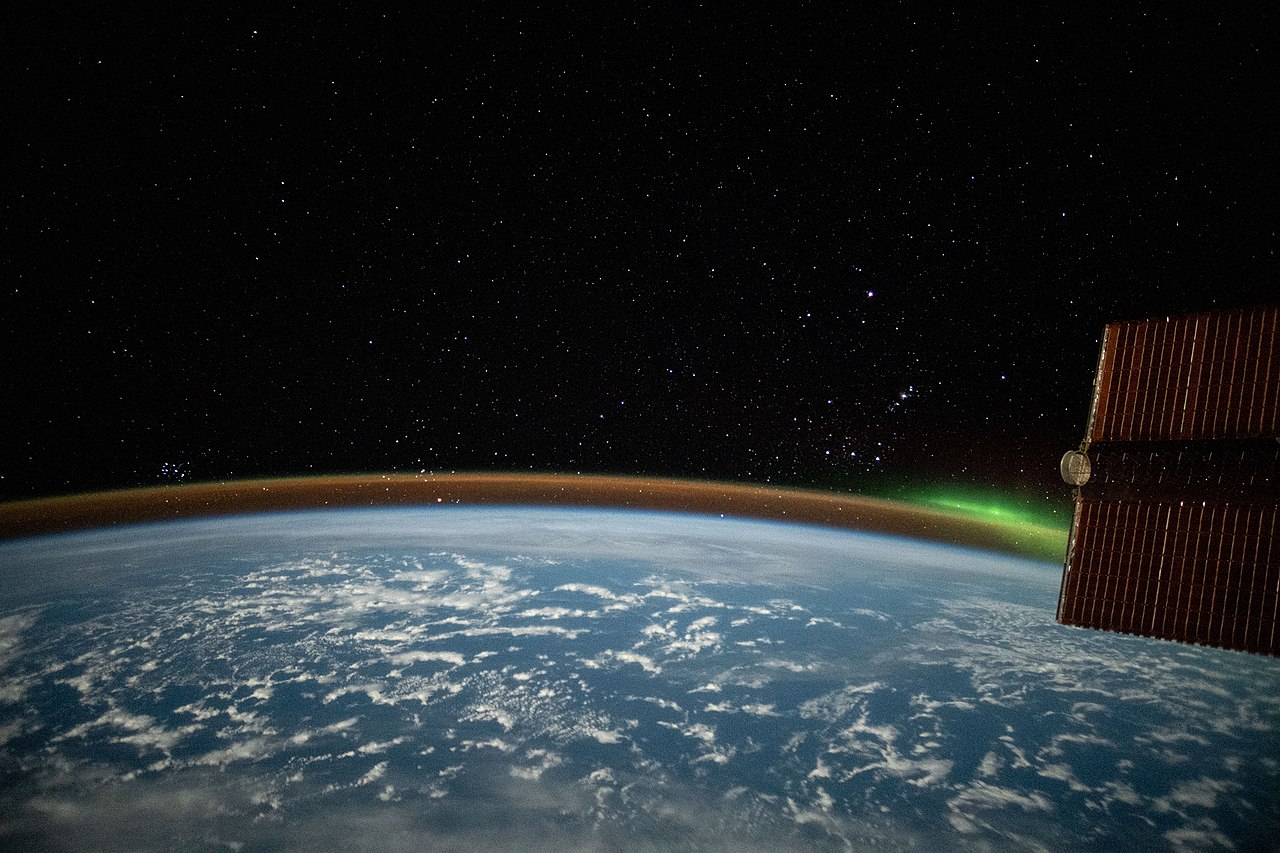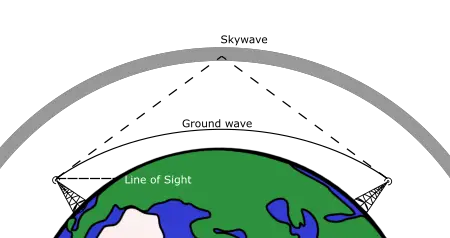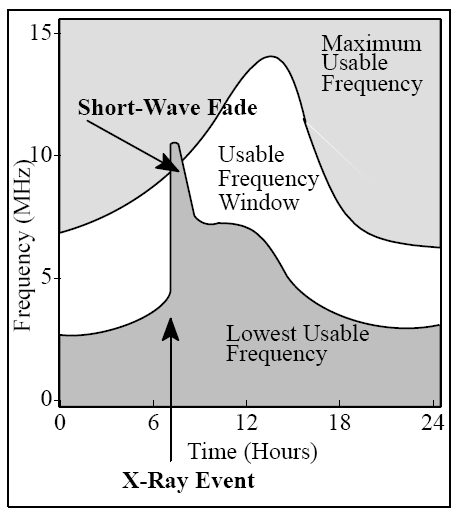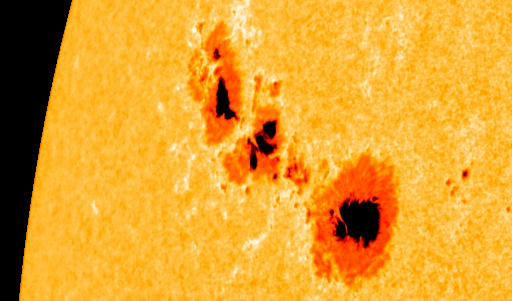The ionosphere is an important part of the mechanism of long-distance radio communication, acting as both a facilitator and a barrier for signals traversing the globe. This layer of the Earth’s atmosphere, charged with ions and free electrons, interacts with radio waves in ways that can extend or limit their journey across distances. Understanding the ionosphere’s role is essential for anyone involved in radio communication, particularly for those seeking to bridge vast distances. This article aims to explore the mechanisms by which the ionosphere influences radio waves, thereby enabling or hindering global communication. Through this exploration, we’ll uncover the complexities of ionospheric effects on radio propagation and grasp how this knowledge is pivotal for effective long-distance communication.
- Understanding the Ionosphere
- Composition and Layers
- D Layer (60-90 km)
- E Layer (90-120 km)
- F Layer
- F1 Layer (150-220 km)
- F2 Layer (220-1,000 km)
- Formation of the Ionosphere
- The Ionosphere’s Role in Radio Communication
- Refraction and Reflection of Radio Waves
- Skywave Propagation
- Solar Activity and the Ionosphere
- Impact of Solar Activity on Ionospheric Conditions
- Solar Flares
- Sunspots
- Effects on Maximum Usable Frequency (MUF)
- Radio Blackouts and Enhanced Propagation Windows
- Radio Blackouts
- Enhanced Propagation Windows
- Day vs. Night Changes in the Ionosphere
- Daytime Ionospheric Conditions
- Nighttime Ionospheric Conditions
- Implications for Amateur Radio Operators
- Daytime Operations
- Nighttime Operations
- Challenges and Opportunities
- Challenges Posed by Ionospheric Variability
- Signal Fading
- Frequency Adjustment
- Opportunities Created by Ionospheric Variability
- Unexpected Contacts
- Exploration and Experimentation
- Practical Tips for Amateur Radio Operators
- Predicting Propagation
- Utilization of Propagation Tools and Models
- Best Practices for Frequency Selection
- Day vs. Night Frequency Choices
- Monitoring Solar Activity
- Antenna Orientation Strategies
- Skywave Propagation Enhancement
- Adapting Antenna Systems for Variability
- Conclusion
- Engage and Learn
- Learn More…
Understanding the Ionosphere
The ionosphere is an integral layer of the Earth’s atmosphere, distinguished by its ionized state, which significantly influences radio wave propagation. It extends approximately from 60 kilometers to 1,000 kilometers above the Earth’s surface. This layer is stratified into distinct sub-layers, each with its characteristics affecting radio communications differently.
Composition and Layers
D Layer (60-90 km)
This is the lowest ionospheric layer, notable for absorbing low-frequency radio waves during daylight hours, while dissipating after sunset, allowing certain frequencies to propagate further.
E Layer (90-120 km)
Positioned above the D layer, the E layer can reflect radio waves, facilitating short to medium-distance radio communication. Its influence is predominantly observed during daytime.
F Layer
This is the highest section of the ionosphere, split into F1 and F2 layers under sunlight:
F1 Layer (150-220 km)
This layer emerges only during the day, aiding in the reflection of higher frequency radio waves.
F2 Layer (220-1,000 km)
The most elevated layer, crucial for long-distance radio communications as it reflects high-frequency radio waves back to Earth. The F2 layer persists throughout the day and night, undergoing significant variations with changing solar activity.
Formation of the Ionosphere
The ionosphere’s formation is a dynamic process primarily driven by solar radiation. As the Earth rotates and orbits the sun, varying degrees of solar energy interact with the upper layers of the atmosphere, initiating the ionization process. This interaction is crucial for creating the ionosphere’s distinct layers and their varying characteristics.
During the day, the sun bombards the atmosphere with ultraviolet (UV) and X-ray radiation. These high-energy photons collide with molecules and atoms in the Earth’s upper atmosphere, imparting enough energy to liberate electrons from their atomic orbits. This process creates a plasma state, a mixture of free electrons and positively charged ions, which defines the ionosphere.
The intensity of ionization and the resulting density of ionized particles are not uniform across the ionosphere’s layers or over time. They are heavily influenced by the sun’s activity, which follows an 11-year cycle known as the solar cycle. During periods of high solar activity, or solar maxima, the increased incidence of solar flares and coronal mass ejections enhances the ionization levels in the ionosphere. Conversely, during solar minima, reduced solar activity leads to lower ionization levels.
Seasonal variations also affect the ionosphere’s formation. The Earth’s tilted axis means that the angle at which solar radiation hits the atmosphere changes with the seasons, altering the ionization rate. This seasonal effect, combined with the diurnal pattern of day-night cycles, means the ionosphere is in a state of constant flux, with its layers expanding and contracting in response to the natural rhythms of solar input.
Furthermore, geomagnetic activity, influenced by interactions between the Earth’s magnetic field and solar wind, can lead to sudden ionospheric disturbances. These disturbances can dramatically change the ionosphere’s density and structure, further affecting its ability to support radio wave propagation.
The Ionosphere’s Role in Radio Communication
The ionosphere plays a crucial role in radio communication by altering the path of radio waves, enabling them to cover distances beyond the line of sight and facilitating global communication networks.
Refraction and Reflection of Radio Waves
As radio waves enter the ionosphere, they encounter a medium with varying densities of free electrons and ions, significantly different from the air below or the vacuum of space above. This density gradient causes the radio waves to bend or refract, a phenomenon similar to light bending as it passes through different materials. In many cases, especially with high-frequency waves, this refraction is sufficient to curve the path of the radio waves back towards the Earth’s surface, effectively extending their reach beyond the horizon.
Moreover, under certain conditions, radio waves can be reflected off the ionosphere, akin to light reflecting off a mirror. This reflection depends on the wave’s frequency and the ionization density of the ionosphere at the point of contact. Lower frequencies are more likely to be reflected, while higher frequencies may either pass through the ionosphere into space or be refracted back towards the Earth if they encounter a sufficiently dense layer of ions and electrons.
Skywave Propagation
Skywave, or ionospheric, propagation is the term used to describe this process of radio waves being refracted or reflected by the ionosphere to travel long distances. This mode of propagation is essential for amateur radio operators, broadcasters, and communication services to establish contacts over hundreds or thousands of kilometers, bypassing the curvature of the Earth that limits line-of-sight communication.
Skywave propagation is highly influenced by the ionosphere’s condition, which varies with the time of day, season, and solar activity. During the night, the absence of solar radiation leads to a decrease in the ionization levels of the D and E layers, reducing their absorptive effect on radio waves and enhancing the reflective capacity of the F layer. This makes night-time ideal for long-distance communication via the skywave propagation mode. Conversely, during the day, increased ionization can enhance absorption in the lower layers while still allowing for effective skywave propagation at higher frequencies.
The ability to utilize skywave propagation effectively requires a good understanding of these ionospheric conditions and how they affect radio wave behavior. Amateur radio operators often rely on predictions and real-time observations of ionospheric activity to choose the best frequencies and times for their long-distance communications, maximizing the chances of successful contacts across vast distances.
Solar Activity and the Ionosphere
Solar activity, including phenomena such as solar flares and sunspots, plays a significant role in shaping the conditions of the ionosphere, thereby directly impacting radio communication by altering the ionospheric layers’ density and composition.
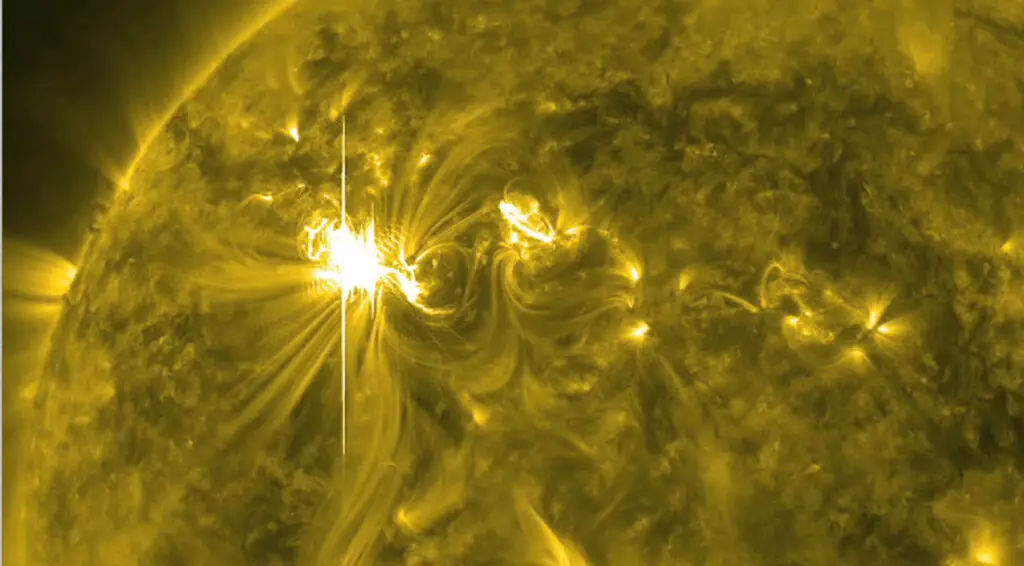
Impact of Solar Activity on Ionospheric Conditions
Solar Flares
Intense bursts of radiation from the sun can momentarily increase the ionization levels in the ionosphere, particularly in the D and E layers. This sudden surge can lead to increased signal absorption, affecting frequencies that would otherwise be reflected by the higher layers, potentially leading to temporary communication blackouts on the sunlit side of the Earth.
Sunspots
These are cooler, darker patches on the sun’s surface associated with intense magnetic activity. Sunspots follow an approximately 11-year cycle, with periods of high sunspot activity (solar maximum) leading to increased solar flares and coronal mass ejections. These activities enhance the overall ionization levels in the ionosphere, affecting long-distance radio wave propagation.
Effects on Maximum Usable Frequency (MUF)
The Maximum Usable Frequency (MUF) is the highest frequency at which a radio wave can be sent from one point to another via ionospheric reflection and still be received. Solar activity significantly influences the MUF:
- During periods of high solar activity, increased ionization can raise the MUF, allowing higher frequency signals to be reflected by the ionosphere and facilitating long-distance communication at frequencies that would otherwise penetrate the ionosphere and escape into space.
- Conversely, intense solar flares can dramatically increase ionospheric absorption in the lower layers, reducing the effectiveness of certain frequencies for communication and, in extreme cases, causing complete radio blackouts.
Radio Blackouts and Enhanced Propagation Windows
Solar activity can lead to both challenges and opportunities for radio communication:
Radio Blackouts
Occur when intense solar radiation floods the ionosphere, temporarily overwhelming its ability to reflect radio waves. This phenomenon is most pronounced during solar flares, leading to the absorption of a wide range of frequencies and disrupting communication channels, especially on the daylit side of Earth.
Enhanced Propagation Windows
Conversely, the increased ionization associated with solar maximum periods can open up new windows of opportunity for radio communication. During these times, the elevated MUF can allow for successful communication at higher frequencies, which under normal conditions might not be usable due to their tendency to penetrate the ionosphere. This can result in clearer signals and longer propagation paths, creating optimal conditions for amateur radio operators to establish contacts over greater distances.
By monitoring solar activity and its effects on the ionosphere, amateur radio operators can better predict propagation conditions, strategically plan their communications, and take advantage of the unique propagation opportunities presented by the ever-changing ionospheric landscape.
Day vs. Night Changes in the Ionosphere
The ionosphere undergoes significant changes between day and night, directly influencing how radio waves propagate through this layer of the Earth’s atmosphere. These variations are crucial for amateur radio operators to consider when planning their communication strategies.
Daytime Ionospheric Conditions
During the day, the sun’s radiation increases ionization levels in the ionosphere, particularly in the D and E layers. This heightened ionization can lead to greater absorption of radio waves in lower frequencies, particularly those within the Medium Frequency (MF) and lower High Frequency (HF) bands. However, the increased ionization also raises the Maximum Usable Frequency (MUF), potentially extending the range of higher frequency signals by enabling them to be refracted back to Earth from the F layer.
Nighttime Ionospheric Conditions
At night, the absence of solar radiation leads to a decrease in ionization levels in the D and E layers, reducing their absorptive effect on radio waves. The F layer, now the predominant layer for skywave propagation, merges into a single layer due to the lack of solar radiation, maintaining a level of ionization that allows it to reflect higher frequency waves. This creates an environment where lower frequencies, less absorbed by the now less ionized D layer, can propagate further via skywave, and higher frequencies that were usable during the day might exceed the night-time MUF and thus fail to be reflected effectively.
Implications for Amateur Radio Operators
The distinction between day and night ionospheric conditions has practical implications for amateur radio operators:
Daytime Operations
Operators should anticipate the need to adjust frequencies upward during daylight hours to account for increased absorption in the lower layers and to take advantage of the higher MUF for longer-distance communication. This might mean favoring higher HF bands for contacts that require skywave propagation.
Nighttime Operations
The reduced absorption and the presence of a consolidated F layer at night open up opportunities for using lower frequencies effectively. Frequencies that might be absorbed or too low to be effectively refracted back to Earth during the day could become optimal choices for nighttime operation, especially for reaching distant stations via skywave propagation.
Understanding these cyclic changes allows amateur radio operators to select frequencies that are more likely to provide successful communication paths at different times of the day. By aligning their operating frequencies with the ionospheric conditions, operators can enhance the reliability and range of their communications, making the most of the ionosphere’s dynamic nature to connect with others around the globe.
Challenges and Opportunities
The ionosphere’s variability presents a unique set of challenges and opportunities for amateur radio operators, affecting the reliability of communication paths and the strategies employed to make successful contacts.
Challenges Posed by Ionospheric Variability
Signal Fading
One of the primary challenges faced by operators is signal fading, which can occur due to the ionosphere’s fluctuating density and composition. As ionospheric layers shift in response to solar activity, time of day, and seasonal changes, the strength and clarity of radio signals can vary, sometimes dramatically. This can result in signals that fade in and out, complicating long-distance communication efforts.
Frequency Adjustment
The need for continuous frequency adjustment arises from the same ionospheric variability. As conditions change, so too does the Maximum Usable Frequency (MUF), requiring operators to adapt by selecting different frequencies to maintain communication. This necessitates a keen understanding of ionospheric science and real-time conditions to optimize frequency selection throughout the day and night.
Opportunities Created by Ionospheric Variability
Despite these challenges, the dynamic nature of the ionosphere also creates exciting opportunities for amateur radio operators:
Unexpected Contacts
Periods of high solar activity and other ionospheric disturbances can enhance propagation conditions unpredictably, leading to the possibility of making unexpected and thrilling contacts. For example, during solar flares or geomagnetic storms, operators might find themselves able to communicate over much greater distances than usual, or with parts of the world that are typically beyond their reach.
Exploration and Experimentation
The variability of the ionosphere encourages continuous exploration and experimentation within the amateur radio community. Operators are motivated to experiment with different antennas, frequencies, and times of operation to discover the most effective strategies for making contacts. This spirit of experimentation and the pursuit of mastering ionospheric propagation contribute to the ongoing growth and vibrancy of amateur radio as a hobby.
The challenges and opportunities presented by the ionosphere’s variability are integral to the experience of amateur radio. They encourage operators to deepen their understanding of atmospheric science, hone their technical skills, and remain adaptable and innovative in their approach to communication. The result is a hobby that is not only about making connections across distances but also about continuous learning and discovery.
Practical Tips for Amateur Radio Operators
Navigating the ionosphere’s variability requires a blend of knowledge, strategy, and the right tools. Here are practical tips to help amateur radio operators adapt to changing ionospheric conditions for successful long-distance communication.
Predicting Propagation
Utilization of Propagation Tools and Models
Tools like VOACAP (Voice of America Coverage Analysis Program) offer predictions on propagation conditions, helping operators anticipate the best times and frequencies for communication. By inputting specific parameters such as location, antenna type, and power, operators can obtain forecasts that aid in planning their radio activities.
Best Practices for Frequency Selection
Day vs. Night Frequency Choices
Given the ionosphere’s day-night cycle, operators should favor higher frequencies during daylight hours when the ionosphere is more ionized and capable of reflecting higher frequency waves. Conversely, lower frequencies tend to be more effective at night when the ionosphere is less ionized and the lower layers have less absorptive impact on signals.
Monitoring Solar Activity
Staying informed about current solar conditions can guide frequency selection. For example, during periods of high solar activity, the MUF may increase, allowing successful communication at higher frequencies than would be possible during solar minimum.
Antenna Orientation Strategies
Skywave Propagation Enhancement
For maximizing skywave propagation, operators should consider antenna designs and orientations that favor the desired propagation path. For instance, directional antennas like Yagi-Udas can be oriented and tilted to optimize the angle of radiation towards the ionosphere, enhancing the chances of successful reflection.
Adapting Antenna Systems for Variability
Having a versatile antenna system that can be easily adjusted for different propagation conditions is advantageous. This might include the ability to switch between antennas optimized for different bands or to adjust the orientation and height of antennas to respond to real-time propagation changes. Flexibility in antenna configuration allows operators to quickly adapt to ionospheric conditions, maximizing communication effectiveness.
These strategies underscore the importance of a proactive and informed approach to amateur radio operation. By leveraging predictive tools, making educated frequency selections, and optimizing antenna systems, operators can enhance their ability to communicate over long distances, despite the challenges posed by the ionosphere’s variability. Engaging with the ionospheric environment in this way not only improves the success rate of communications but also enriches the amateur radio experience through the application of scientific principles and practical ingenuity.
Conclusion
The ionosphere plays an indispensable role in facilitating global communication for amateur radio operators, serving as a dynamic medium that can both enhance and challenge long-distance signal propagation. Its ability to refract and reflect radio waves makes it possible to establish contacts far beyond the horizon, bridging continents and cultures. However, the ionosphere’s variability, influenced by solar activity and diurnal shifts, necessitates a deep understanding of its mechanisms to navigate these changes effectively. For amateur radio operators, mastering the nuances of ionospheric conditions is not just about ensuring successful communication; it’s about harnessing the full potential of the hobby, turning challenges into opportunities for exploration and connection.
Engage and Learn
We encourage all amateur radio enthusiasts to dive deeper into the world of ionospheric propagation. Engage with the amateur radio community to exchange experiences, strategies, and tips on navigating the ionosphere’s complexities. Such interactions can provide invaluable insights and foster a shared learning environment.
Additionally, consider keeping a detailed log of your radio communications, noting the time, frequency, and conditions of each contact. Over time, this log can serve as a personal database, helping you discern patterns in how ionospheric changes affect signal propagation. This practice not only enhances your operational strategy but also contributes to the collective knowledge of the amateur radio community, paving the way for more informed and successful global communications.
Learn More…
For a deeper understanding of the ionosphere and its impact on long-distance communication, I’ve found several resources that elaborate on its complexities, behaviors, and the science behind radio wave propagation through it:
- Wikipedia’s Ionosphere Page offers a historical perspective, detailing contributions by pioneers like Oliver Heaviside and Arthur Edwin Kennelly, and significant advancements in understanding the ionosphere’s role in radio communication.
- Windupradio explains how the ionosphere reflects radio waves back to Earth, enabling long-distance communication, and discusses how its behavior changes between day and night.
- Science@NASA provides insights into how Earth’s weather and space weather influence the ionosphere, affecting long-distance radio communication. It also introduces NASA missions like GOLD and ICON that study the ionosphere using ultraviolet light.
- Exarnet delves into factors affecting shortwave radio propagation, including solar activity’s impact on the ionosphere and the challenges of geographic positioning for long-distance transmissions.
- The Center for Science Education at UCAR highlights the pre-satellite era of radio communications that utilized the ionosphere for extending the range of transmissions and explains how the ionosphere can both reflect and absorb radio signals.
- An article from Nature (1948) discusses the role of the ionosphere in radio communication, providing a historical scientific view on the topic.
- The Bureau of Meteorology – Space Weather Services discusses the effects of geomagnetic storms on HF radio communication and introduces tools and predictions for managing HF frequency during solar events.
- Canada’s Space Weather discusses how GNSS systems and HF radio propagation are influenced by the ionosphere and space weather, affecting navigational systems and radio communications.
These resources offer a broad spectrum of information, from the basic mechanics of ionospheric interaction with radio waves to the advanced scientific studies and tools used to predict and manage the effects of the ionosphere on long-distance communication.

